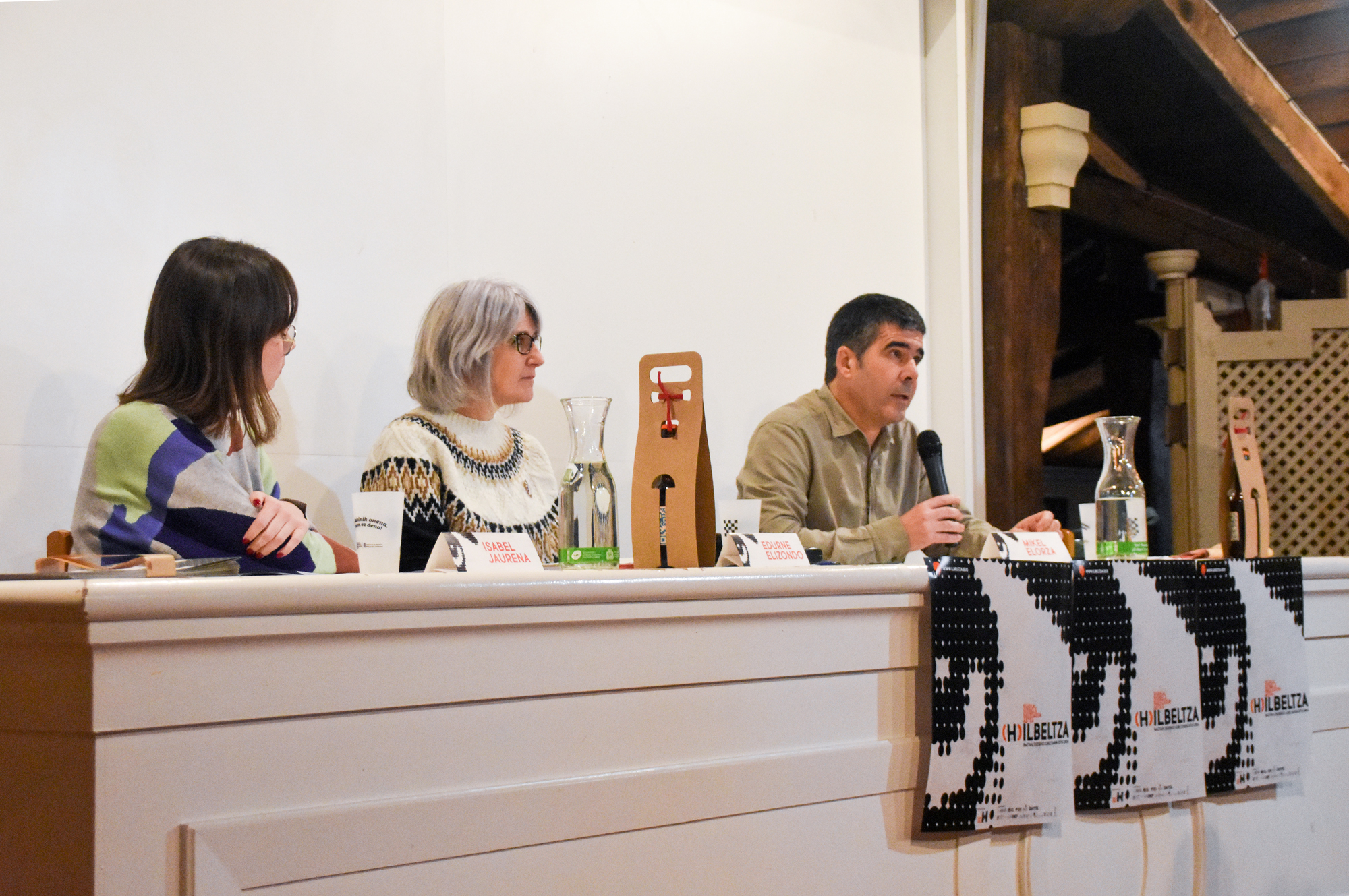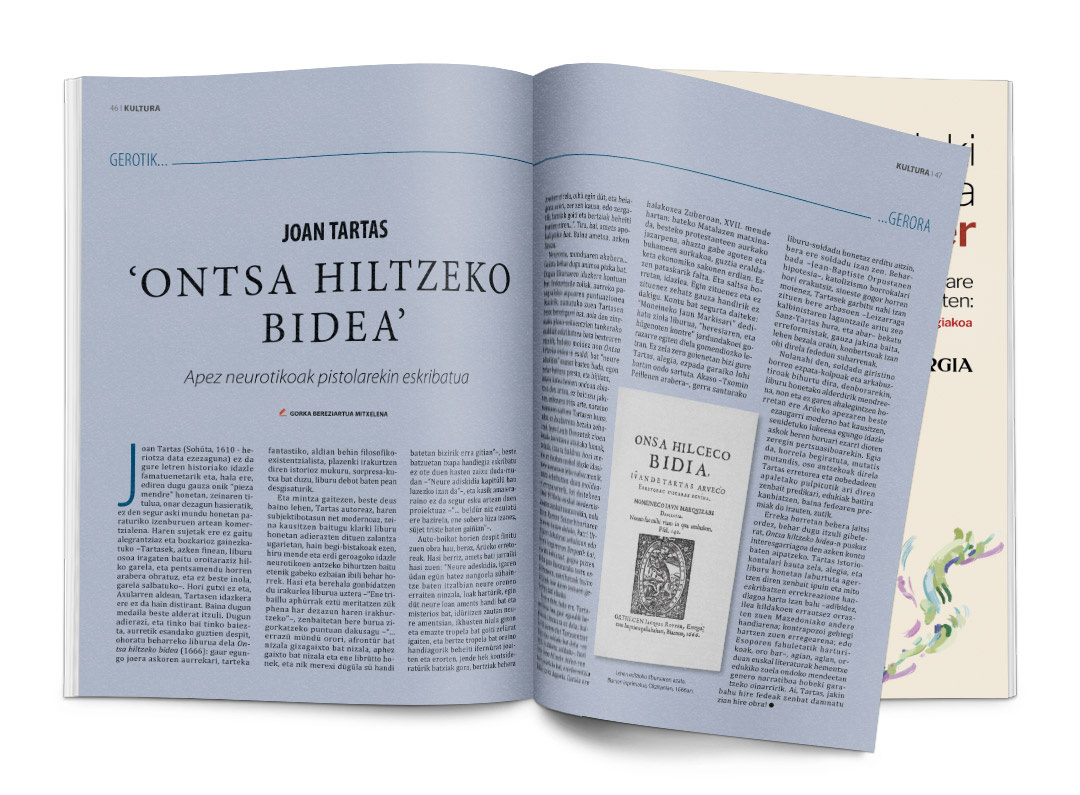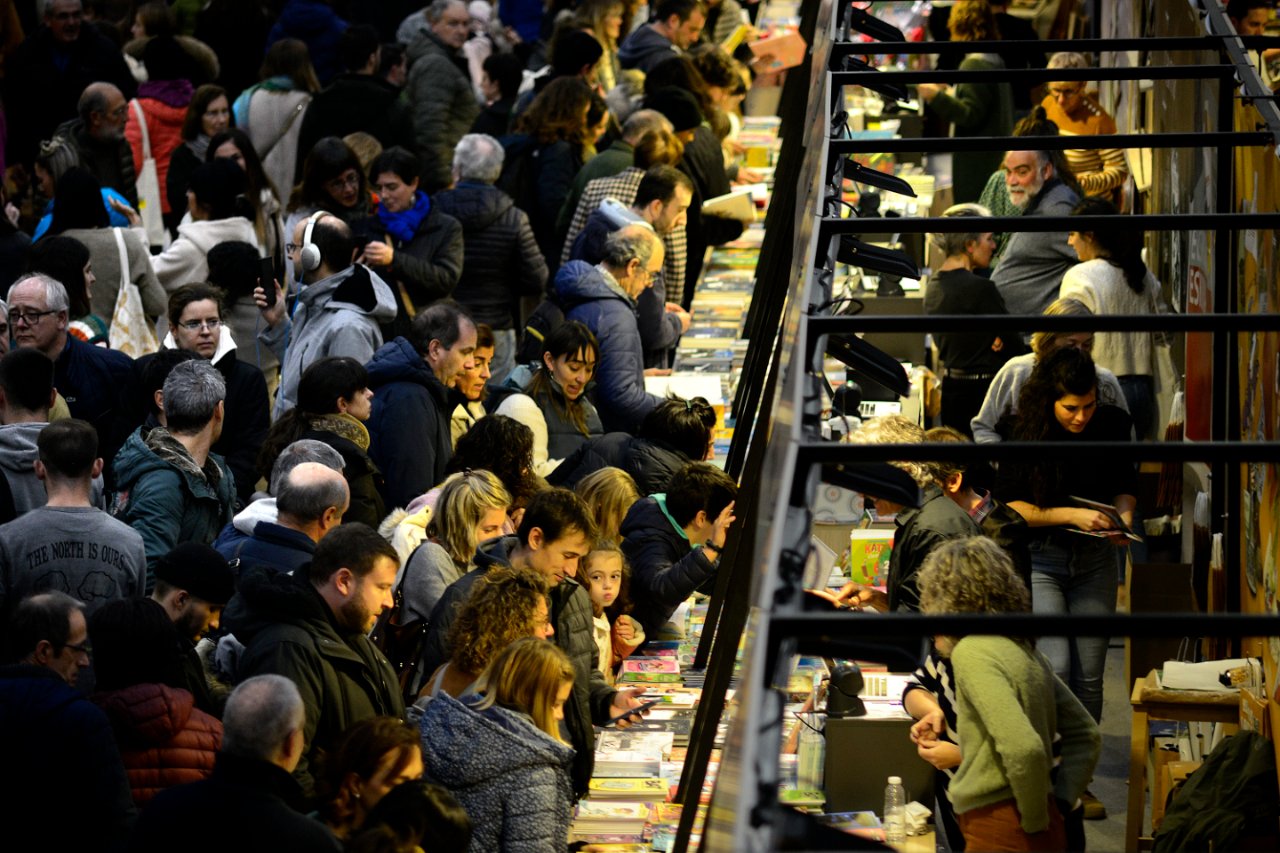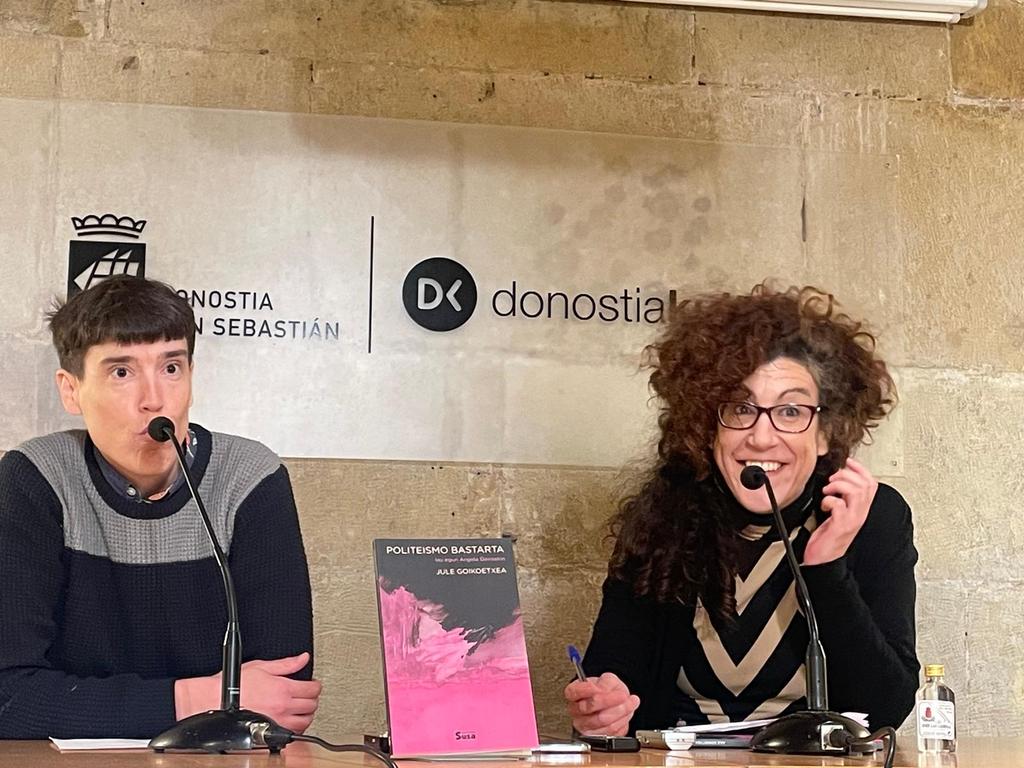Learning to write stories: Where to start and what to follow?
- Garazi Arrula (Tafalla, 1987) and Iñigo Astiz (Iruñea, 1985) have been invited by Mikel Ayerbe (Azpeitia, 1980) to the second of the tertulias on Basque literature, Idazeaz. The theme of this interview program has been the Basque story, and among other things, they have talked about the creative processes of the guests, their writing and their stories. When it comes to writing stories, they start from intuitions, but then it becomes a technical exercise.
.jpeg)
Who is entitled to say that he is a poet? What does that matter? Iñigo Astiz has written poetry and children's literature, has done translations and is a cultural journalist in Berria. He has recently published the book of stories Monogamoak (Susa, 2024). He has always drawn attention to the tendency of writers, especially renowned writers, to refuse to call themselves a poet. The word poet seems to have a more symbolic burden than the writer's. Why give up, if not, “as if it were a divine title”? You think you have a reaction: “Writing poetry is something, but it’s something earthly.” What is more, he wants to proclaim it, as uncomfortable categories are proclaimed, which leads to the extreme: “Even those who call them poet say that they are poets, for I am poet!” However, he believes that it is a categorization that mainly serves to situate oneself: “It’s an intimate debate and probably doesn’t care about the world.”
Garazi Arrula, for his part, has been given the vertigo of being a writer. “But we must legitimize ourselves,” he acknowledges, and tries not to feel uncomfortable when he is called a writer, although he does not call himself that.
Arrula started her literary journey in the world of translation. He is an editor, a translator of narrative, poetry and essay, and has written, among others, two books of stories. Last year he published his second novel, Lurraz beste (Txalaparta, 2023). It's not very clear whether the translation of the narrative has led him to write stories, but what he loves the most is reading nonfiction, and that's why he works with the narrative. In his opinion, the basis lies in what you like to read.
Why the story?
The stories you want to tell determine that stories are written, because they fit to that extent; that's what Arrula has said. However, it does not rule out the use of another narrative genre if I would like to make a more respiratory report. However, Arrula's stories are not short, but he tries to give the plot enough space to develop them, to put the reader in the story and remember the story. “He stays” in Arrula’s stories, according to the driver of the program Mikel Ayerbe.
Astizen, on the other hand, is a story with many molds and lengths, as the writing method is also very different to a great extent between both authors. Arrula has to write a story, while Astiz is dedicated to chasing a sensation or an image when she starts writing without knowing where she is going to go. In other words, he doesn't write in the face of the final product: he doesn't care if a book comes out of it or something else. He's interested in writing. However, Arrula has suggested that some decisions are made: “You’ve been clear that it wasn’t a piece of poetry or journalism.”
And how do you build a story?
In Arrula’s writing, Ayerbe has highlighted the work that the characters do in the play. The author himself also recognizes that he dedicates time to profiling the characters and expressly tries to develop them in the stories. There are many more characteristics of the characters that he collects in his notes than those that appear in the text, in order to “see” it, achieve coherence and adhesion. The protagonists of the stories go beyond what the story tells, and it is a part of those imagined lives that it introduces into the narrative. He also pays special attention to the diaphologists, because he finds it difficult to create good dialogues and because they also have a huge influence on the character’s construction. Astiz admired that Arrula’s books “accumulate layers” and stressed that: “Each word has a historical, political and social background.”
But in all stories there are more than characters and scenes. You have to keep the narrative. How do you do that? How do you make decisions, how do you plan writing?
Ayerbe has asked Arrula about the importance of the plot because he considers that it is not his style that seeks to “end the story with a concrete fact”, although “it does not escape the climax”. Although there are no big explosions, Arrula believes that in his stories the displacements, the kraks, are always there, where the characters never end.
As for storytelling techniques, Astiz decides what is central to the story (tone, reliability, or otherwise), and after working it. “Sensations have a technical response,” he explains, “and although it seems obvious, the story is a very technical issue.”
What an image can do
When film director Federico Fellini hesitated to make a film, didn't know if he was getting it right or didn't know how to move forward when he was locked, he devoted all his attention to the decoration, to the construction of the stage. He seemed to believe that if he built a very realistic fruit maker, a very realistic salesman, a family of wires and a story to the family would appear.
This is how Astiz builds characters: starting from a gesture, from an image, from a way of walking, and writing below. For him they are “puppets”, without too defined forms. Astiz stands out, however, for its technique: “In your stories we see something, but we don’t know what it is and you keep the tension.”
Does the story, by its form, focus on the details? Is it a way of looking? If yes, Arrula: “I don’t have good memory nor am I especially imaginative, but I’m an observer and I think it can be seen in the details.” Not only that, you also look for consistency in stories: in the novel you can get thatched, in the story you do not admit it.
Even in poetry, Astiz believes that if you capture a detail, “the detail that talks about what goes beyond detail,” it can be enough to build the text. However, it is not the same in the poem and in the story: the second leaves more than despising detail, looking beyond, unfolding.
Of the function of humor
Often, Astiz resorts to black humor in her stories, or to the edge of the boundary between humor and seriousness. “I live thinking that if the reader laughs at a story with a joke, he hasn’t caught the serious part, and if he doesn’t laugh, he hasn’t understood the story,” he paradoxically explained. Humor is not a resource that consciously uses, it says, but “a useful tool to understand the world.” It serves to approach problematic realities from another place and, above all, “without the need to solve”, to show sincerely the reality that is “dirty”. It can also bring problems: it is not desirable, for example, to lower everything to the level of vanity. Because not everything is banal, “there are things that are deep or painful,” he said.
In Arrula's books, the tone seems more serious at first glance, but there's a more subtle humor, in some cases of irony. Part of it thinks it's a matter of temperament. He wrote much more about the earth than in the first book, and although he won't laugh out loud, he makes fun of it with an evil laugh. Getting this means for Arrula sharing codes with the reader.
Joan Tartas (Sohüta, 1610 - date of unknown death) is not one of the most famous writers in the history of our letters and yet we discover good things in this “mendre piece” whose title, let us admit it from the beginning, is probably not the most commercial of the titles... [+]












ilbeltza-(1).jpg)









